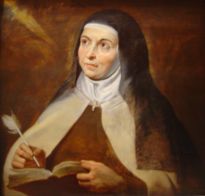
Fr. Ron Shirley
The following is today’s homily from Fr. Ron Shirley, pastor of Resurrection Parish in Aptos, CA. Today’s readings are for the 22 Sunday of Ordinary Time, Cycle B. (DT 4:1-2,6-8, JAS 1:17-18,21b-22,27, MK 7:1-8, 14-15, 21-23)
Fr. Ron’s homilies are available every week at www.FatherRon.com.
An elderly priest made a retreat. In the course of it he was struck deeply by three things that he’d always been aware of but never had really taken to heart.
First, there are millions of people in the world who are hungry and homeless. Second, he had spent his entire priestly life preaching comfortable sermons to comfortable people. Third, he had bent over backwards to avoid disturbing or alienating people.
In other words, the priest found himself to be much like the priest played by Jack Lemmon in the film “Mass Appeal.” He preached only about those things that didn’t disturb his parishioners and made them feel good.
And now, like the priest in “Mass Appeal,” the old priest suddenly realized that he had been more worried about pleasing his people than about preaching the Gospel. He had been more worried about rocking the boat than about challenging his parishioners to look into their hearts to see if they were satisfied with what they saw there.
The week following his eye-opening retreat, the old priest looked up the Scripture readings to prepare his Sunday homily.
As he read the Gospel, these words of Jesus leaped right off the page: “These people honor me with their lips, but their hearts are far from me.”
The priest resolved, then and there, that he was going to share his soul-searching with his parishioners. So he began his homily by saying:
“My homily this morning will be exactly 30 seconds long. That’s the shortest homily that I’ve ever preached in my life, but it’s also the most important homily I’ve ever preached.”
With that attention-grabbing introduction, the priest gave his 30-second homily. He said:
“I want to make just three points. First, millions of people in the world are hungry and homeless. Second, most people in the world don’t give a damn about that. Third, many of you are more disturbed by the fact that I just said damn in the pulpit than by the fact that I said there are millions of hungry and homeless people in the world.”
With that the elderly priest made the sign of the cross and sat down.
That homily did three things that many homilies don’t do.
First, it caught the attention of the people.
Second, it caught the spirit of Jesus’ words in the gospel.
Third, hopefully it made the people look into their hearts.
The story of this priest and the gospel reading make the same point.
Religion is not something we do on Sunday. It’s not primarily, observing certain laws, saying certain prayers, or performing certain rituals.
That’s what many people in Jesus’ time had turned religion into. To observe these rituals was to please God. Not to observe them was to sin. In short, observing rituals became identified with being religious.
To illustrate the hypocrisy of such legalism, William Barclay tells this story – about a Muslim pursing an enemy to kill him. In the midst of the chase, the Azan, or public call to prayer sounded. Instantly the Muslim got off his horse, unrolled his prayer mat, knelt down, and prayed the required prayers as fast as he could. Then he leaped back on his horse to pursue his enemy in order to kill him.
It was precisely this kind of legalism that Jesus opposed so vigorously in his time.
Jesus made it clear that religion isn’t something you do at certain times on certain days. It’s not saying certain prayers or performing certain rituals. It’s a thing of the heart. It’s a thing of the heart called love – love of God and love of neighbor. Love in action.
Today’s Scripture reading invites us to look into our hearts and to ask ourselves to what extent the words of Jesus in today’s gospel reading apply to us: “This people honor me with their lips, but their hearts are far from me.”
The Scriptures also invite us to look into our own hearts and ask ourselves to what extent the words of James in today’s second reading apply to us:
Act on (God’s) word.
If all you do is listen to it, you are deceiving yourselves.”
I hope this homily today did 3 things:
First – it caught your attention.
Second – it caught the spirit of Jesus’ words in the Gospel.
Third – it makes all of us look into our hearts!




























